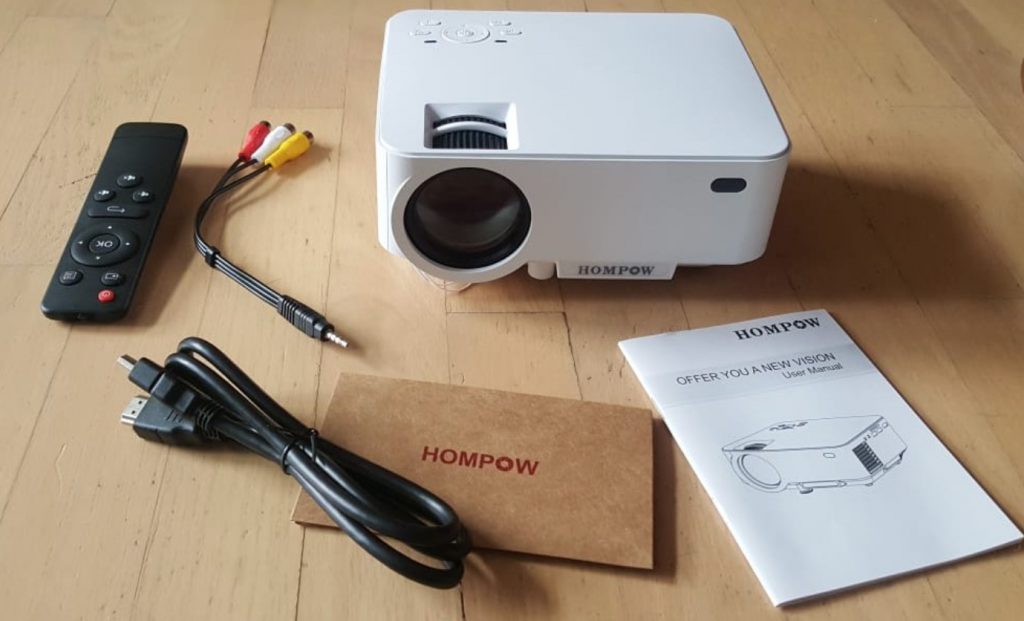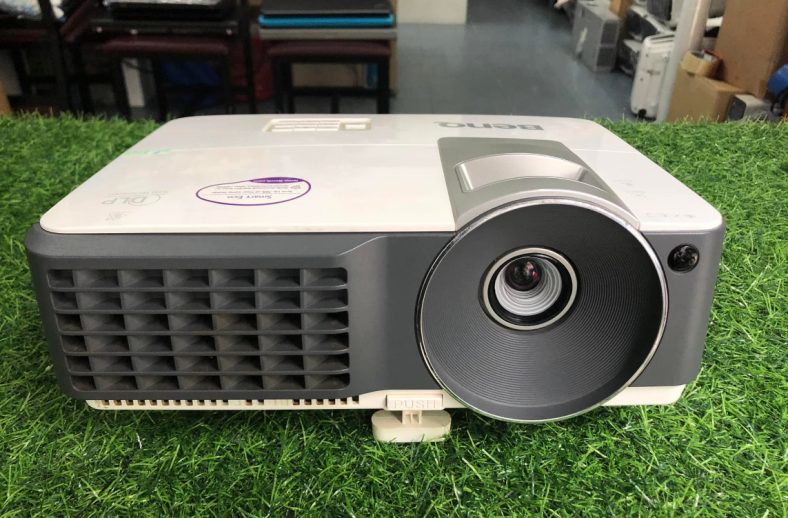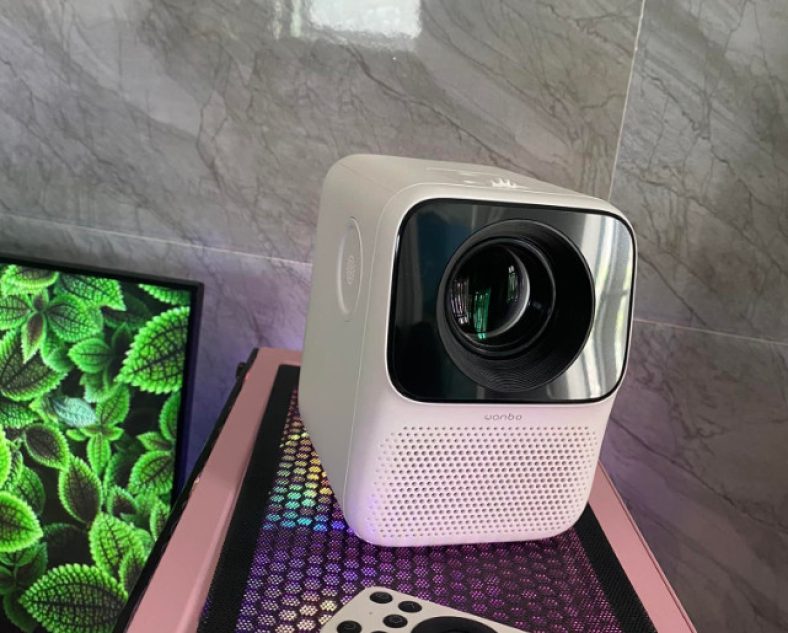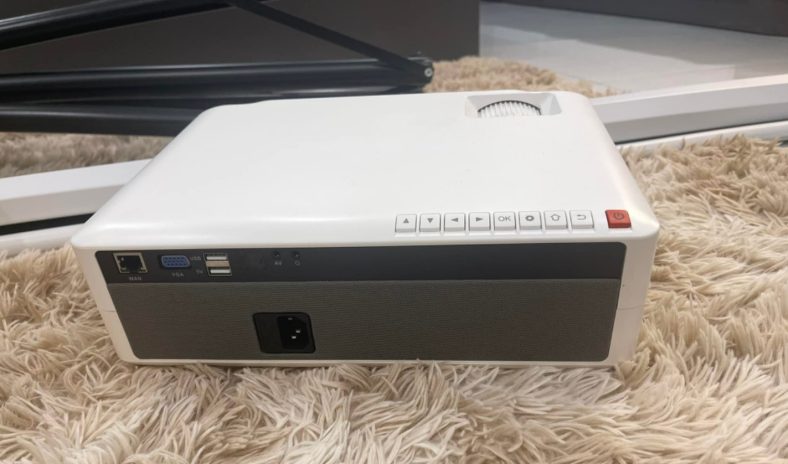
What is a good Contrast Ratio for a projector?
Have you ever questioned why your projector produces a washed-out picture? It may be the contrast ratio. But what is a good contrast ratio for a projector?
Many people can recommend the ratio of 10,000:1. Although a higher rating means better, the ideal setting depends significantly on the ambient light.
How can you opt for the perfect projector? How to improve the contrast of your pictures? For detailed answers, let’s follow our post!
Table of Contents
What Is The Projector Contrast Ratio?
The contrast ratio (CR) refers to the balance of maximum bright white to full dark black on display.
For example, a projection with a CR of 2000:1 will produce 2000 times more brilliant whites than dark blacks.
FOFO and ANSI are the two most used ways for determining this figure.
ANSI
The ANSI technique simultaneously measures black-and-white luminance levels using a checkerboard-patterned image.
When conducted in an ideal setting, the test may involve the space’s effects in its measurement.
ANSI uses a checkerboard test picture with 16 squares, eight white, and eight black, for the measurements.
This method helps you measure both black and white shapes’ brightness and calculate the average.
As a result, the reading compares the black and white blocks. In most cases, the ANSI ratio is 700:1 or 1000:1.
Related:
– What is the Wattage of a Projector?
– Who Was the Projector’s Inventor?
FOFO
Manufacturers can easily manipulate FOFO (Full-On and Full-Off) contrast patterns.
As a result, its data is misleading, although it is popular with industrial makers. This method is more of a marketing strategy than a reliable way of determining CR.
FOFO is the ratio of the brilliance of the solid white images to the display’s solid black images.
Your projector will create 2000x stronger solid white pictures than solid black pictures if your equipment has a 2000:1 FOFO.
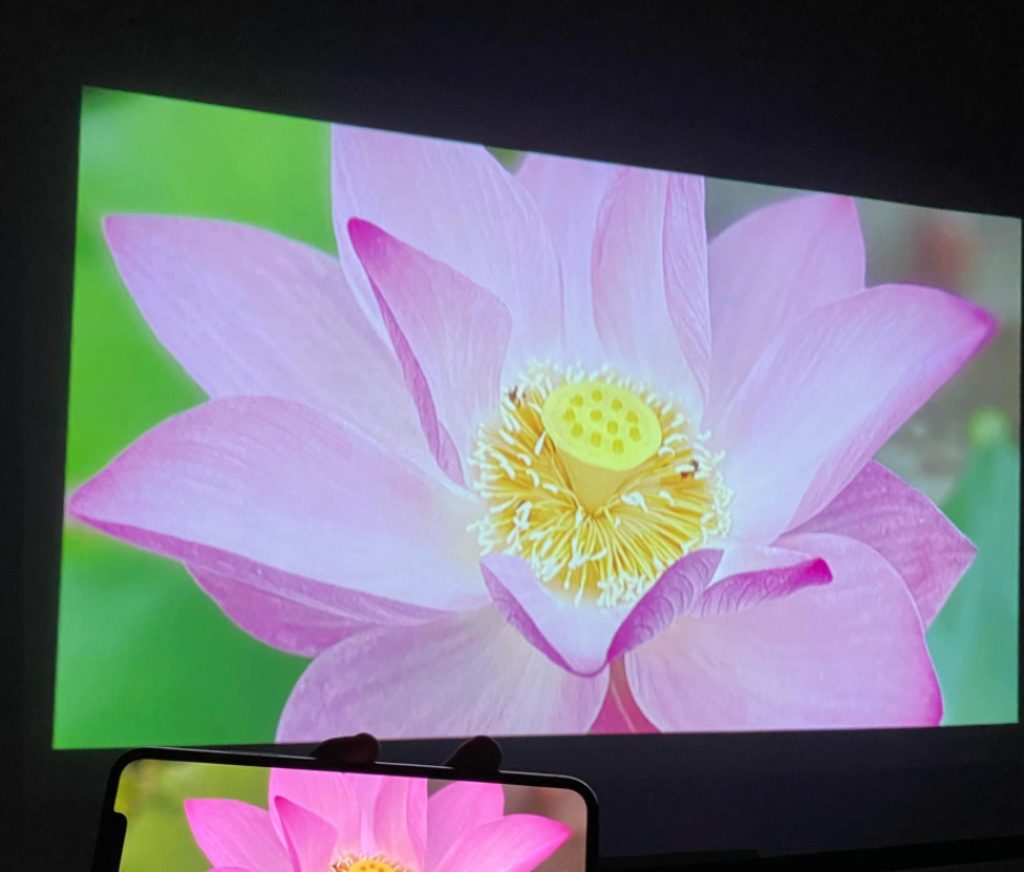
What Is A Good Contrast Ratio For A Projector?
Manufacturers and users highly recommend the CR of 10,000:1, which can best suit your preference. In general, the higher the CR, the better.
However, the answer may vary depending on the setting, such as the ambient light in your room.
If you use the projector in a dark, sealed space, you won’t notice a significant difference in picture quality if you adjust the CR.
So, instead of tweaking your projector’s screen resolution, you’ll spend more time improving the surroundings and removing any distracting lighting effects.
Finally, the ideal CR depends on your own tastes and what you consider to be the optimum image quality you’ve obtained through testing and fine-tuning the output.
You may find that a 9,000:1 ratio produces a vivid picture for you, but your audience may think the image is odd, giving them a less pleasant experience.
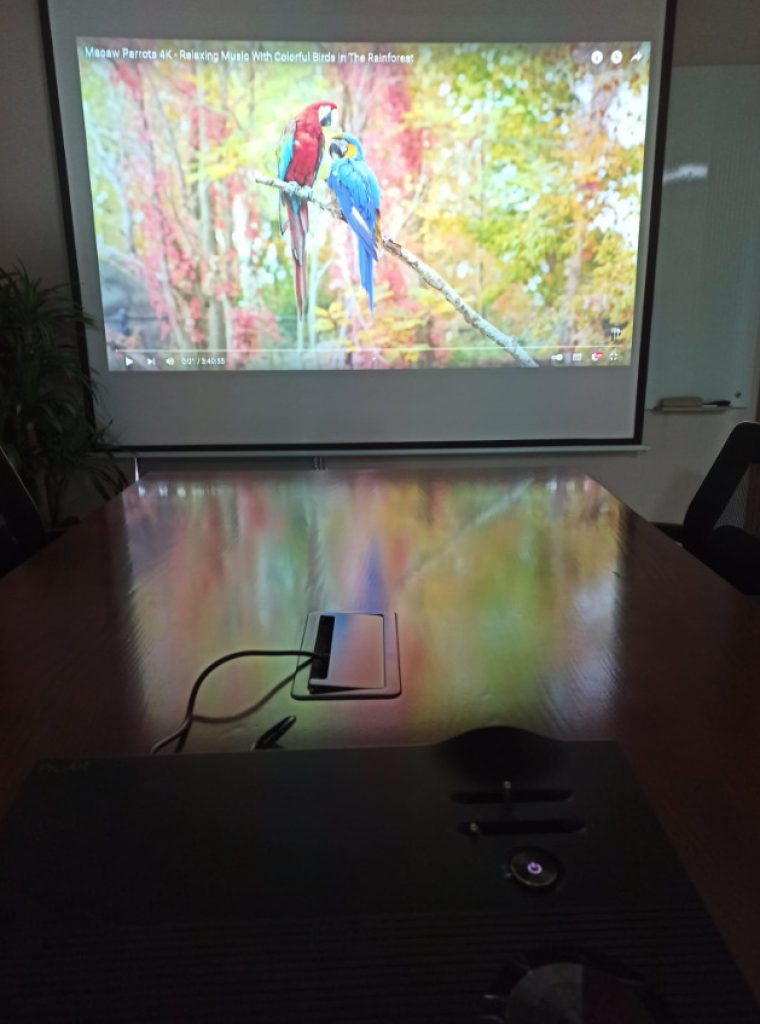
What Is More Important: Lumens Or Contrast Ratio?
Lumens are a measurement of a lamp or light source’s total quantity of visible light (to human eyes).
How does lumen rating work?
Lumens show how much light you can get from a light source. So, more lumens indicate brighter lighting.
You should adjust the lumen rating of your projector based on the environment.
For example, a room with little ambient light demands a lower lumen projection, while a room with more ambient light needs a higher lumen rating.
Related:
– For an outdoor projector, how many lumens?
– Projector: Lux vs. Lumens
Which is more important?
We may argue that the projector’s lumens produce light, whereas the CR delivers details.
Lumens are as important as CR. You’ll get utterly washed-out pictures if you have a projection with good lumens but little contrast.
While the CR defines the projection’s accuracy, the lumen level determines its maximum brightness level.
One is not more vital than the other since they both perform different tasks during projection. So, when picking a projector, look for one with a high CR and a good lumen rating.
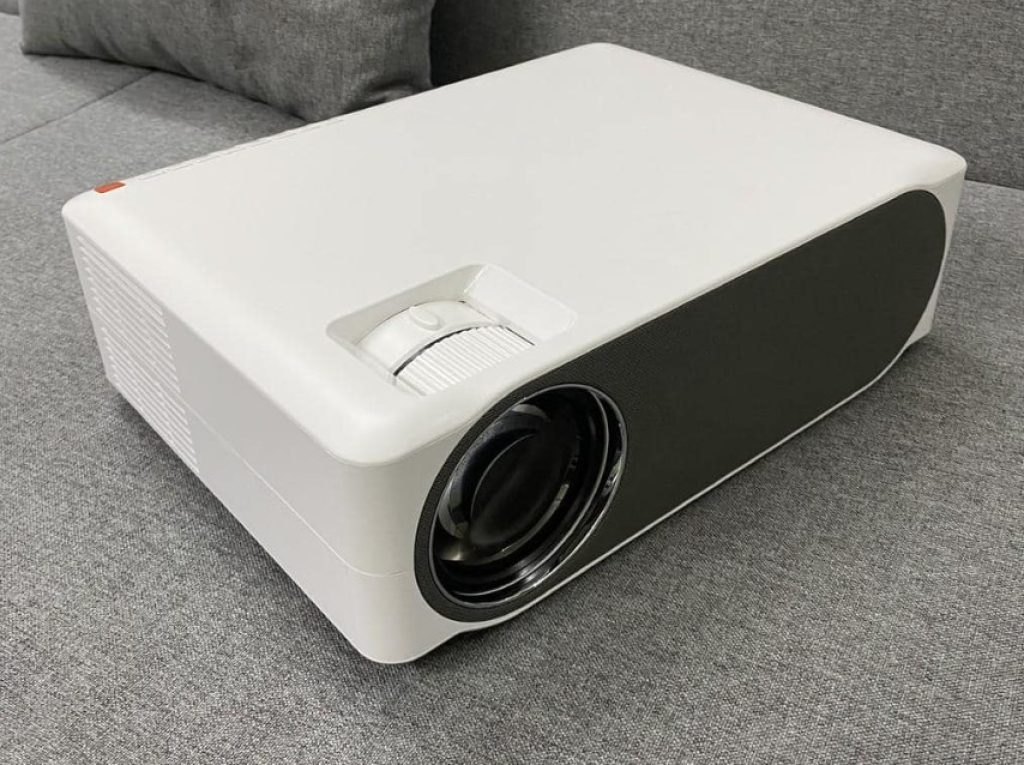
How To Improve The Contrast Ratio?
Because the CR is completely reliant on the surroundings, we’ll tell you how to boost it in both light and dark conditions.
In modest ambient
There are several methods to achieve the best image in modest ambient light, including:
Darken the room
Because ambient light is a projector’s biggest enemy, you may improve the CR by using some easy strategies to dim your space.
- Use a dark color, such as gray, to paint the room.
- Close the windows and door; you may also use curtains to block light rays.
- Ambient light should not be visible on your screen.
- Turn off all the lights.
You probably think it’s preferable to keep your projector in a darkened room, and you’re right. It will work perfectly for you.
Otherwise, getting a new TV with a higher CR is your only option.
Replace the screen
Changing an old white screen with a dark panel can work for you. For example, if you have a projector with an average CR of 5,000:1, which works well in a dark cave but causes distracting gray flashes in a moderate ambient room.
Adjust the settings
You may also test with the following settings in the projector to improve the CR:
- Brightness
- Color saturation
- Color temperature
- Tint
- Skin tone
In dark
You can easily notice the color contrasts in a dark setting. Here is how to optimize your display in this case:
- Make sure to turn off any ambient lighting source.
- To achieve the best contrast within a good dark setting, paint the room a dark hue and keep your ceiling black as well.
- You may experiment with brightness, color temperature, color saturation, and contrast by altering the color setting.
- To get the desired contrasts and blacks, adjust the tint, saturation, etc.
- We recommend that you get an expert to set up your projector once.
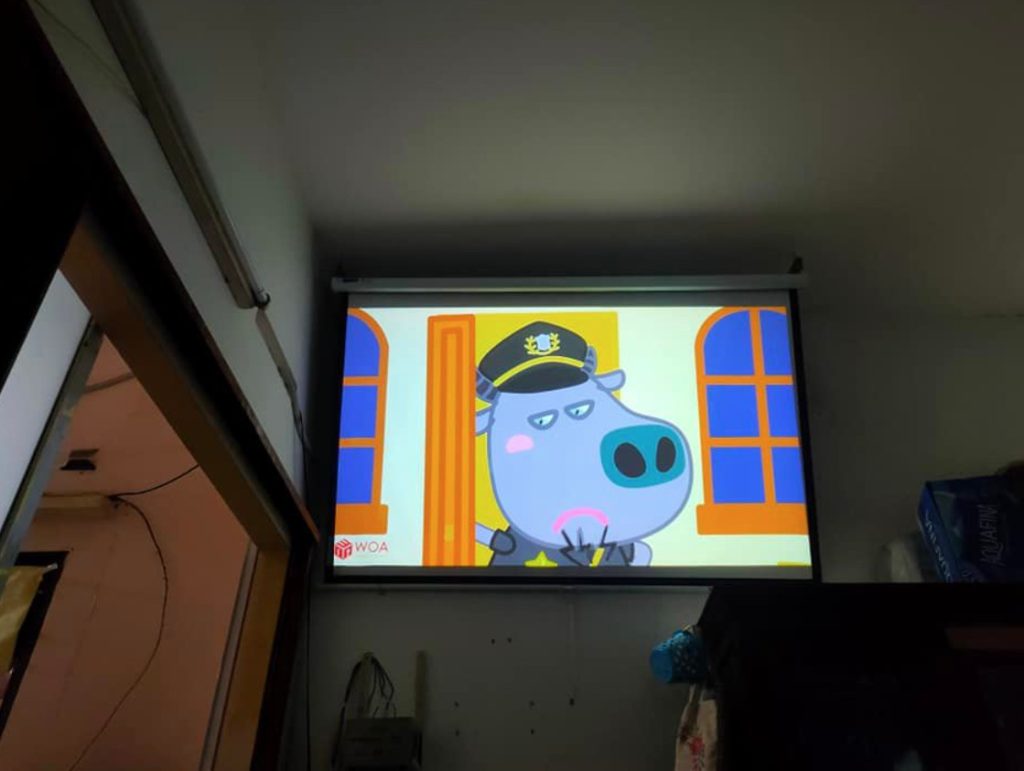
Conclusion
The CR of 10,000:1 is good for most projectors and settings. If possible, you can go for models with higher ratings.
If the ambient light affects your experience, you can adjust the setting of your projector until you get the desired pictures.
Hopefully, you will find this article helpful. For any further information, please feel free to ask. Thank you for reading!

